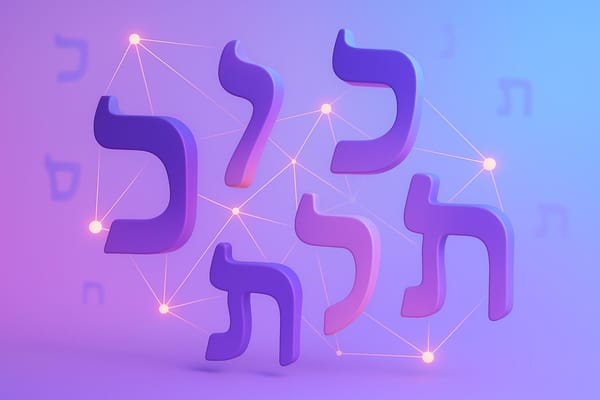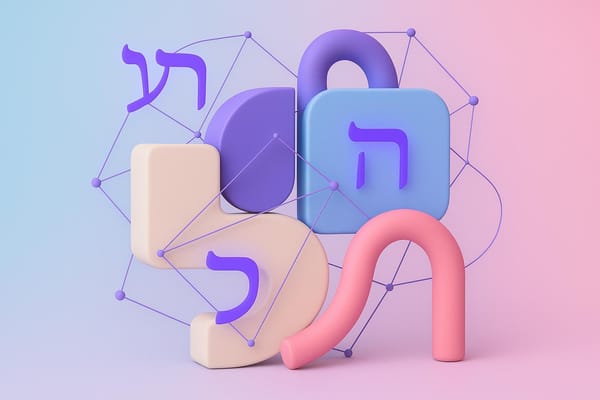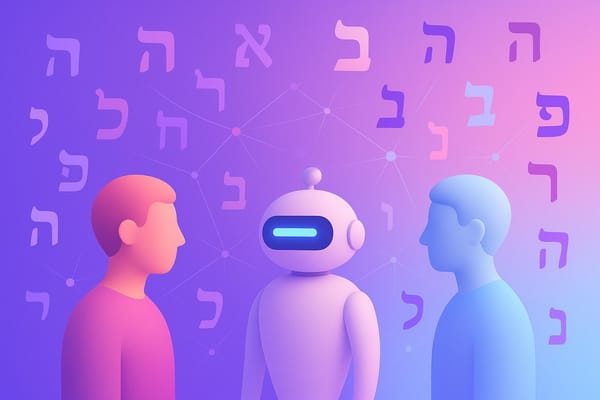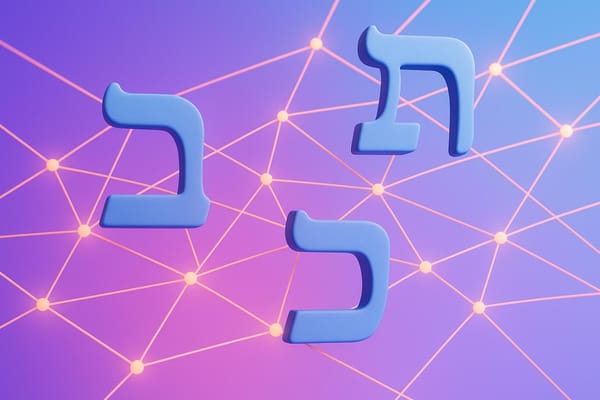AI in Cross-Cultural Communication
Explore how AI is enhancing Hebrew-English communication through advanced translation tools that understand cultural nuances and grammatical complexities.
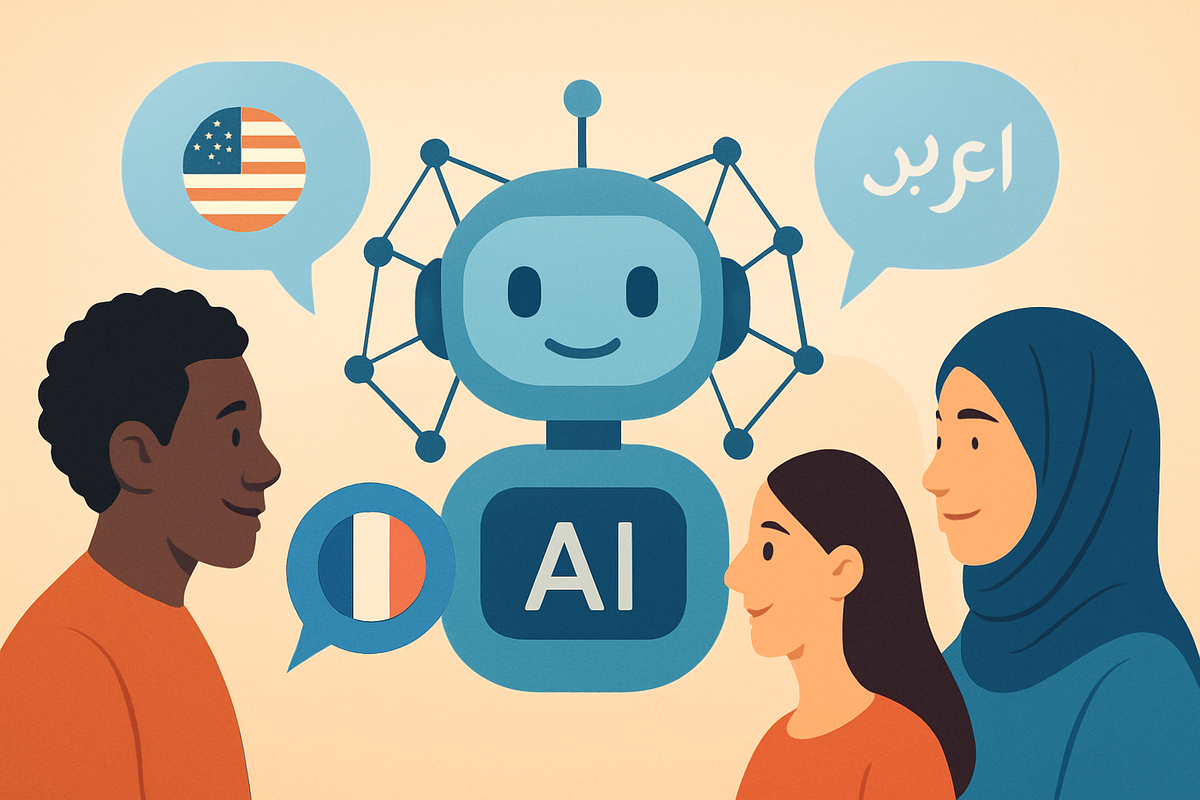
AI is transforming how people communicate across cultures, especially for complex languages like Hebrew. Here’s what you need to know:
- AI translation tools now go beyond word-for-word translations to interpret idioms, cultural meanings, and formality levels.
- Hebrew poses unique challenges, such as gendered grammar, right-to-left script, and deep cultural layers.
- Platforms like baba address these issues with context-aware processing, ensuring translations feel natural and accurate.
These advancements improve professional and personal communication, making it easier to bridge linguistic and cultural gaps. Want to experience it? Sign up for baba’s app at www.itsbaba.com.
AI speaks English, but what about the rest of us? | Emma Pan ...
AI Progress in Hebrew Translation
Recent advancements in AI are addressing the unique challenges of translating Hebrew, paving the way for improved cross-cultural communication through automated tools.
Tackling Hebrew Grammar and Gender
Platforms like baba are now equipped with advanced algorithms to:
- Handle Hebrew's dual-gender system and related verb conjugations with precision
- Ensure agreement between nouns, adjectives, and verbs
- Differentiate between formal and informal address forms
These systems analyze the context of both the speaker and the recipient to select the correct gender forms. This level of grammatical accuracy helps capture the nuances of Hebrew communication.
Context-Aware Translation
Modern AI translation tools have made strides in understanding context, which is crucial for Hebrew. They now consider:
- Situational Context: Whether the conversation is professional, casual, or formal
- Speaker-Listener Dynamics: Adjusting translations based on the relationship between the parties involved
baba delivers translations that feel natural and culturally appropriate to native speakers. This is especially important in professional and personal interactions where subtle communication differences can significantly impact understanding.
Advances Highlighted in Recent Studies
Recent studies show how these technological improvements are enhancing Hebrew translation. AI systems now excel at:
- Managing right-to-left text formatting
- Navigating Hebrew's root-based morphology
- Handling compound words and prefixes
- Maintaining proper sentence structure across languages
These ongoing developments make Hebrew-English translation smoother and more intuitive, benefiting both business and personal communication.
Sign up for the baba mobile app waitlist at www.itsbaba.com.
Breaking Language Barriers with AI
AI is transforming how Hebrew and English speakers communicate, making it easier to overcome linguistic and cultural differences.
Communication Style Differences
Hebrew and English differ in directness, formality, and cultural nuances. baba's AI technology carefully interprets these elements, analyzing context and relationships between speakers to ensure translations stay true to the original meaning and tone.
Hebrew-English Success Cases
In business settings:
- Real-time translations that maintain a professional tone
- Accurate localization of technical documents
- Emails tailored to match the right level of formality
In social settings:
- Smooth support for casual conversations
- Preservation of cultural context
- Accurate expression of emotions and subtleties
These advancements bring us closer to solving even more challenges in AI translation.
Sign up for our mobile app waitlist at www.itsbaba.com.
AI Translation Challenges
While AI translation systems have made great strides, they still face hurdles that need addressing to improve cross-cultural communication. Even with advancements in context-aware translation, there’s room for improvement in several key areas.
Translation Bias Prevention
AI translation tools need fine-tuning to avoid perpetuating cultural and gender biases. For example, Hebrew’s gender-specific language structure can pose unique challenges. baba tackles this by using contextual analysis to correctly identify the gender of both the speaker and the recipient.
Some critical focus areas include:
- Avoiding gender-based translation errors
- Ensuring accurate interpretation of idiomatic expressions
- Maintaining sensitivity to cultural nuances
Data Security in Translation
Organizations relying on AI translation tools demand strong data protection. Translation systems today must balance accessibility with privacy by implementing:
- End-to-end encryption to safeguard communications
- Local data processing to reduce exposure during transmission
- Compliance with global privacy regulations to meet legal and ethical standards
Solutions for Better AI Translation
Recent advancements are helping improve the accuracy and reliability of AI translations through:
Context-Aware Processing
- Using deep learning models to analyze surrounding text for better context
- Recognizing relationships between speakers for more accurate translations
- Adjusting translations to fit specific situations
Improved Language Models
- Incorporating cultural knowledge to enhance understanding
- Regularly updating databases to reflect modern language trends
- Better handling of industry-specific or technical terminology
These developments are paving the way for more reliable and nuanced AI-driven translation tools.
Get on the waitlist for our mobile app at www.itsbaba.com
What's Next for AI Translation
AI translation technology is making significant strides, reshaping how Hebrew and English speakers communicate.
New Hebrew-English AI Features
AI systems are pushing the limits of language processing. Here are some key advancements:
Better Context Understanding
- Improved neural networks capable of recognizing cultural nuances
- Awareness of different levels of formality
- Ability to adjust instantly to shifts in conversation
Multimodal Translation
- Use of visual context for more precise translations
- Voice-to-text features that recognize accents
- Interpretation of gestures and body language for deeper communication
With these tools, baba is at the forefront, offering natural, context-aware translations that respect the intricacies of Hebrew. These advancements pave the way for further research to address remaining challenges.
Areas That Need More Focus
Despite progress, some challenges remain:
Cultural Context
- Training models to understand idioms tied to culture
- Recognizing historical and religious references
- Adapting to social contexts
Technical Hurdles
- Managing code-switching between Hebrew and English
- Addressing dialect variations in modern Hebrew
- Enhancing real-time translation speeds
Ethical Concerns
- Ensuring translation algorithms remain unbiased
- Safeguarding user privacy during translations
- Preserving cultural sensitivity in outputs
Overcoming these challenges will help shape the next wave of AI translation tools.
Want early access? Join the waitlist for our mobile app at www.itsbaba.com.
Conclusion
Main Points
AI has made significant strides in bridging the gap between Hebrew and English. Advanced neural networks now tackle the complexities of Hebrew grammar and cultural nuances with impressive accuracy.
Key Highlights:
- Real-time processing that effectively manages Hebrew grammar and tone
- Incorporation of cultural context into translations
- Better handling of idiomatic expressions
These advancements improve both professional workflows and personal communication, opening new doors for seamless interaction between the two languages.
Next Steps
As these technologies evolve, future updates will aim to make communication even smoother. baba's approach to Hebrew translation shows how AI can maintain the essence of a language while making it more accessible to English speakers.
What’s Next:
- Greater focus on cultural nuances in translations
- Enhanced tools for real-time communication
- Improved handling of Hebrew's unique linguistic traits
- Broader applications for both professional and casual use
Sign up now to enhance your Hebrew-English communication experience at www.itsbaba.com.


